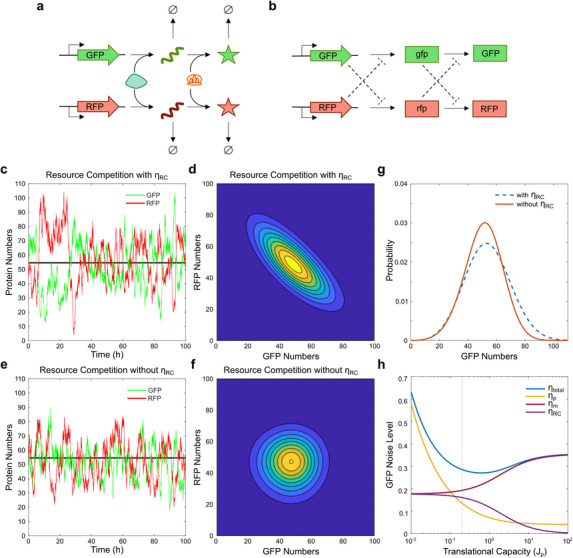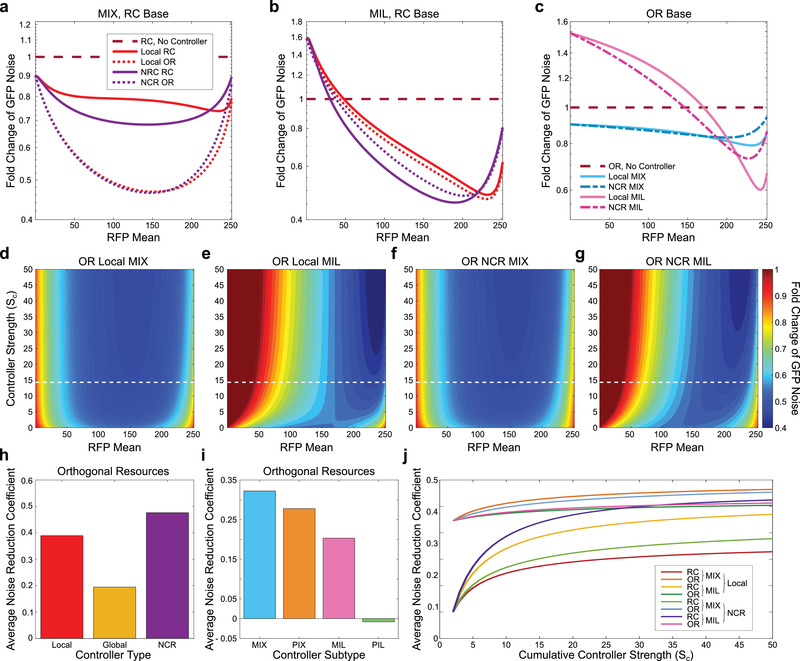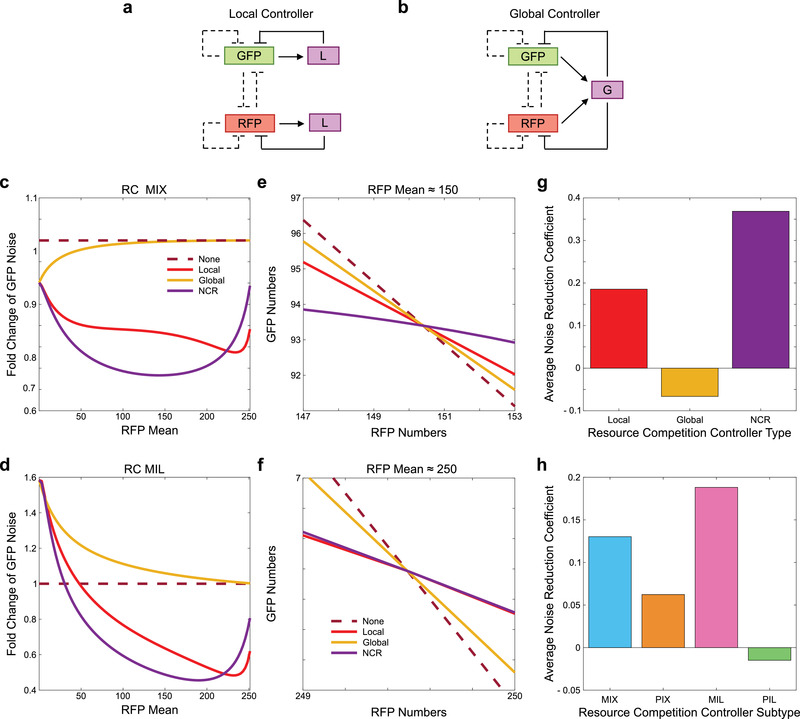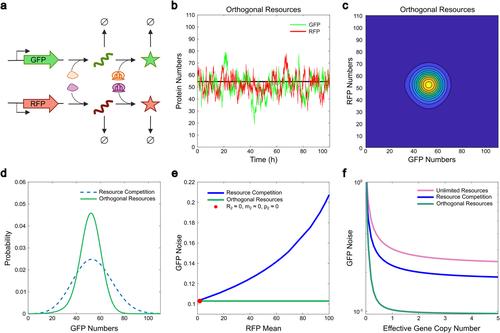Double-Edged Role of Resource Competition in Gene Expression Noise and Control
引用次数: 4
Abstract
Despite extensive investigation demonstrating that resource competition can significantly alter the circuits’ deterministic behaviors, a fundamental issue is how resource competition contributes to the gene expression noise and how the noise can be controlled. Utilizing a two-gene circuit as a prototypical system, we uncover a surprising double-edged role of resource competition in gene expression noise: the competition decreases noise through a resource constraint but generates its own type of noise which we name as “resource competitive noise.” Utilization of orthogonal resources enables retaining the noise reduction conferred by resource constraint while removing the added resource competitive noise. The noise reduction effects are studied using three negative feedback controller types: negatively competitive regulation (NCR), local, and global controllers, each having four placement architectures in the protein biosynthesis pathway (mRNA or protein inhibition on transcription or translation). Our results show that both local and NCR controllers with mRNA-mediated inhibition are efficacious at reducing noise, with NCR controllers demonstrating a superior noise-reduction capability. We also find that combining negative feedback controllers with orthogonal resources can improve the local controllers. This work provides deep insights into the origin of stochasticity in gene circuits with resource competition and guidance for developing effective noise control strategies.




资源竞争在基因表达噪声与控制中的双刃剑作用
尽管广泛的研究表明资源竞争可以显著改变合成基因回路的确定性行为,但资源竞争如何导致基因表达噪音以及如何控制这种噪音仍不清楚。利用双基因电路作为原型系统,资源竞争在基因表达噪声中发挥了令人惊讶的双刃剑作用:竞争通过引入资源约束来减少噪声,但产生了自己的噪声类型,我们称之为“资源竞争噪声”。利用正交资源可以保留由资源约束带来的降噪,同时消除额外的资源竞争噪声。使用三种负反馈类型来研究降噪效果:负竞争调节(NCR),局部和全局控制器,每种控制器在蛋白质生物合成途径(mRNA或蛋白质对转录或翻译的抑制)中具有四种放置结构。结果表明,具有mrna介导抑制作用的局部控制器和NCR控制器都能有效地降低噪声,其中NCR控制器表现出更强的降噪能力。将反馈控制器与正交资源相结合可以改进局部控制器。这项工作提供了深入了解基因电路中随机性的起源与资源竞争,并指导制定有效的噪声控制策略。
本文章由计算机程序翻译,如有差异,请以英文原文为准。
求助全文
约1分钟内获得全文
求助全文

 求助内容:
求助内容: 应助结果提醒方式:
应助结果提醒方式:


